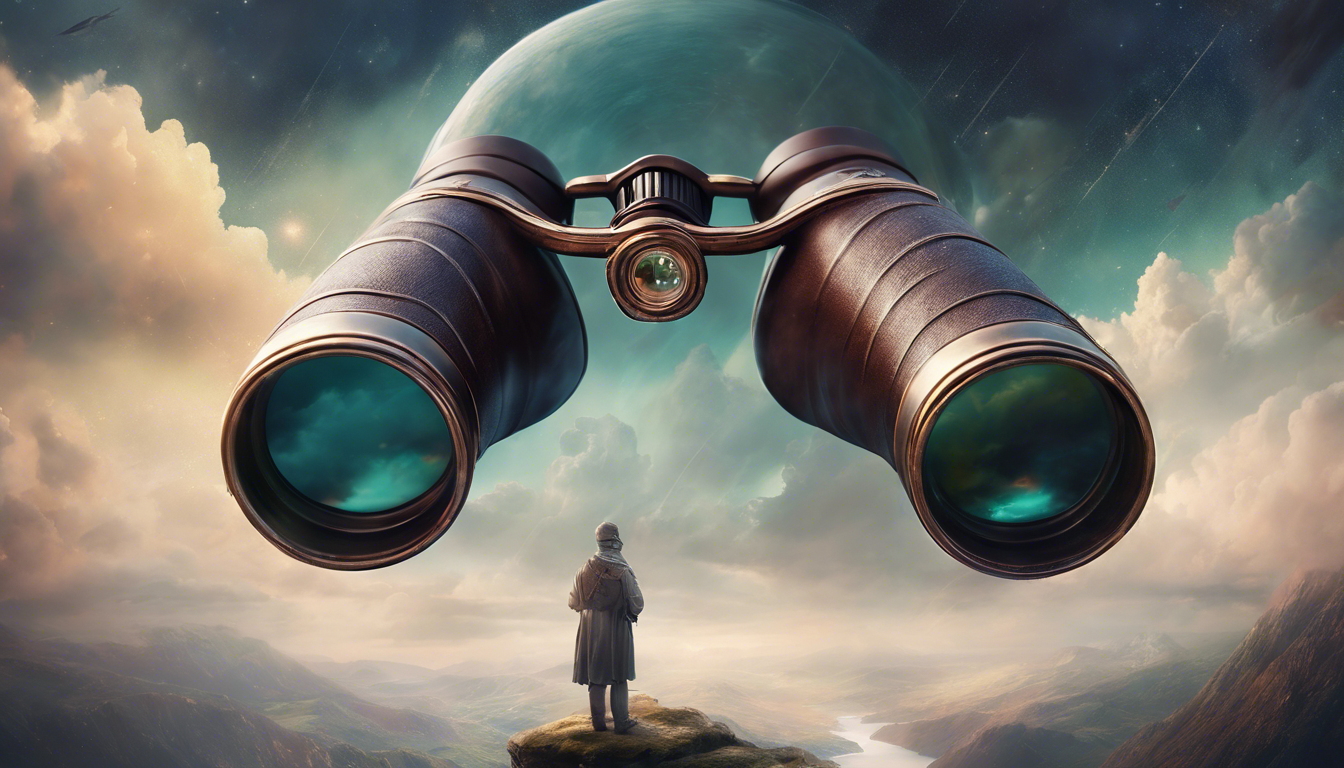The Function of Binoculars
What are binoculars?
Binoculars are optical instruments that are designed to magnify distant objects. They consist of two telescopes mounted side by side, allowing the user to view objects with both eyes simultaneously. Binoculars come in various sizes and magnification powers, making them versatile tools for a wide range of activities.
How do binoculars work?
Binoculars work by utilizing a combination of lenses and prisms to magnify the image and bring it closer to the viewer. The objective lenses at the front of the binoculars gather light and focus it onto the prisms, which then invert and rotate the image. The eyepiece lenses further magnify the image, allowing the viewer to see a larger and more detailed view of the object.
The different parts of binoculars
Binoculars consist of several key parts, each serving a specific function. These parts include the eyepiece lenses, objective lenses, focus wheel, diopter adjustment, prism system, and the body of the binoculars. Understanding the different parts and how they work together is essential for getting the most out of your binoculars.
Applications of binoculars
Binoculars have a wide range of applications across various fields. Here are some common uses of binoculars:
1. Astronomy: Binoculars are often used by stargazers to observe celestial objects, such as planets, stars, and galaxies. They provide a wider field of view compared to telescopes, making them suitable for scanning the night sky.
2. Birdwatching: Binoculars are essential tools for birdwatchers, allowing them to observe and identify bird species in their natural habitats. With the ability to magnify distant birds, binoculars enable bird enthusiasts to study their behavior and plumage details.
3. Sports and Events: Whether you’re attending a sports event or a concert, binoculars can enhance your experience by bringing distant action closer. You can get a better view of players or performers, making you feel more connected to the event.
4. Wildlife Observation: Exploring nature and observing wildlife is made easier with binoculars. From tracking animal movements to spotting elusive creatures, binoculars enable nature enthusiasts to get a closer look without disturbing the animals.
5. Travel and Sightseeing: When exploring new destinations, binoculars can help you appreciate the beauty of landscapes, landmarks, and architectural details from a distance.
Tips for choosing the right binoculars
When selecting binoculars, consider the following factors:
1. Magnification: Decide on the desired level of magnification based on your intended use. Higher magnification provides a closer view but can result in shakier images.
2. Objective Lens Diameter: A larger objective lens diameter allows more light to enter the binoculars, resulting in brighter images, especially in low light conditions.
3. Field of View: A wider field of view allows you to see more of the surrounding area. This is useful when observing fast-moving subjects or scanning landscapes.
4. Compactness and Weight: If portability is a priority, consider compact and lightweight binoculars that are easy to carry during outdoor activities.
5. Durability and Waterproofing: If you plan to use binoculars in rough outdoor conditions, opt for models that are waterproof, fog-proof, and built with sturdy materials.
In conclusion, binoculars are valuable tools that allow us to explore and appreciate the world around us. From observing celestial wonders to immersing ourselves in nature, binoculars enhance our experiences and bring distant objects closer. By choosing the right pair of binoculars and understanding their functionality, we can unlock a whole new level of visual exploration.
For more information on binoculars and their features, visit example.com.
The History of Binoculars

Binoculars are a fascinating tool that have been used for centuries to enhance our vision and bring the distant world closer to us. The history of binoculars is a tale of innovation and ingenuity, as inventors and scientists sought to improve upon the basic concept of magnifying vision.
Early Origins
The concept of magnifying lenses dates back to ancient times, with the Romans and Greeks known to have used rudimentary lenses made of polished crystal to enhance their vision. However, it wasn’t until the 17th century that the first true binoculars were developed.
One of the earliest mentions of binoculars came from the Dutch mathematician and astronomer Johannes Kepler, who described a device in 1608 that used two convex lenses to magnify distant objects. This early design laid the foundation for the modern binoculars we use today.
The Birth of Binoculars
The credit for inventing the first binoculars is often given to the Dutch scientist and inventor, Hans Lippershey. In 1608, Lippershey applied for a patent for his creation, which consisted of two telescopes mounted side by side. This design allowed for the binocular effect, where both eyes could view an object simultaneously.
While Lippershey’s invention was a breakthrough, it lacked the ability to focus on objects at different distances, limiting its practical use. It wasn’t until the mid-19th century that advancements in optical technology allowed for the development of fully functional, adjustable binoculars.
The Age of Innovation
During the 19th century, several inventors made significant contributions to the field of binoculars. These advancements included the introduction of prisms to achieve a more compact and portable design, along with the ability to adjust the focus for varying distances.
One notable figure in the history of binoculars is Carl Zeiss, a German optician who revolutionized the field with his high-quality lenses. Zeiss’s contributions to optical technology not only improved the clarity and sharpness of binoculars but also laid the groundwork for many future innovations.
Modern Binoculars
In the 20th century, binoculars became more accessible and widespread, with improvements in both design and manufacturing processes. The introduction of specialized coatings and materials further enhanced the optical performance of binoculars, making them an essential tool for various applications.
Today, binoculars have evolved to meet various needs and preferences. From compact and lightweight models for outdoor enthusiasts to high-powered, professional-grade binoculars for astronomy and bird watching, there is a wide range of options available to cater to every individual’s requirements.
The history of binoculars is a testament to mankind’s desire to explore and better understand the world around us. From the early magnifying lenses of ancient civilizations to today’s advanced optical technologies, binoculars have come a long way in providing us with a closer look at the wonders of our environment.
Whether you’re a nature lover, a stargazer, or simply curious about the world, binoculars offer a glimpse into the beauty and intricacy of our surroundings. So the next time you pick up a pair of binoculars, take a moment to appreciate the centuries of innovation and craftsmanship that have gone into creating this remarkable tool.
Types of Binoculars

When it comes to exploring the wonders of the natural world, observing wildlife, or watching sporting events from afar, binoculars are an essential tool. These fascinating optical devices allow us to see distant objects with clarity and detail. However, not all binoculars are created equal. There are various types of binoculars available, each with its own unique features and purpose. In this article, we will delve into the different types of binoculars, their characteristics, and their applications.
1. Standard Binoculars
Standard binoculars, also known as general-purpose binoculars, are the most common type available on the market. They offer a wide range of magnification options, typically from 7x to 12x, making them suitable for a variety of activities such as bird-watching, hiking, and nature observation. Standard binoculars are versatile and provide a balanced combination of magnification, field of view, and portability.
2. Compact Binoculars
Compact binoculars, as the name suggests, are designed to be lightweight and portable. They are ideal for travelers, outdoor enthusiasts, and anyone who needs a pair of binoculars that can easily fit in a pocket or bag. Compact binoculars typically have a lower magnification power, usually ranging from 4x to 8x, sacrificing some magnification for increased portability. These binoculars are perfect for concerts, sporting events, and casual observations on the go.
3. Zoom Binoculars
Zoom binoculars, also known as variable magnification binoculars, offer adjustable magnification, which enables users to zoom in and out on their subjects. These binoculars usually have a magnification range like 10-30x or 8-24x, providing flexibility for various viewing needs. Zoom binoculars are suitable for activities that require both long-distance observations and close-up views. However, it’s worth noting that zoom binoculars might sacrifice some image quality compared to fixed magnification binoculars.
4. Astronomy Binoculars
Astronomy binoculars are specially designed for stargazing and celestial observations. With larger objective lenses and higher magnification power, typically ranging from 10x to 20x, astronomy binoculars allow users to observe the night sky in more detail. They offer a wider field of view compared to telescopes, making them excellent for scanning large areas of the sky. Astronomy binoculars are perfect for amateur astronomers or anyone interested in exploring the wonders of the cosmos.
5. Marine Binoculars
Marine binoculars are specifically designed to withstand the challenging conditions at sea. They are waterproof, fog-proof, and often have a built-in compass for navigation purposes. Marine binoculars usually have a lower magnification, around 7x, to provide a stable image on a moving boat. These binoculars are popular among sailors, boaters, and maritime enthusiasts who want to enhance their navigational experience and spot distant objects on the water.
From standard binoculars to compact binoculars, zoom binoculars, astronomy binoculars, and marine binoculars, there is a wide array of choices available to suit different purposes and preferences. Whether you are a nature lover, an adventurer, an astronomer, or a sports enthusiast, there is a pair of binoculars that will enhance your viewing experience and help you explore the world around you. Choose the right type of binoculars based on your specific needs and embark on a journey of discovery. Happy observing!
Keywords: Types of Binoculars, Standard Binoculars, Compact Binoculars, Zoom Binoculars, Astronomy Binoculars, Marine Binoculars
Choosing the Right Binoculars for Your Needs

When it comes to exploring the great outdoors or observing wildlife, binoculars are an essential tool. But with so many options available, how do you choose the right binoculars for your needs? In this article, we’ll explore the important factors to consider when selecting binoculars that will enhance your outdoor experiences.
Understanding Binocular Specifications
To make an informed decision, it’s essential to understand the specifications associated with binoculars. These specifications include magnification power, objective lens diameter, and field of view. Magnification power determines how close the subject appears, with higher magnifications resulting in a narrower field of view. The objective lens diameter influences the amount of light that enters the binoculars, affecting image brightness and clarity. Finally, the field of view describes the width of the area visible at a specific distance.
Consider Your Intended Use
One of the first considerations when choosing binoculars is your intended use. Are you primarily interested in birdwatching, stargazing, or general outdoor activities? Different activities may require specific features. For example, birdwatchers may prefer binoculars with a wider field of view, while astronomers may prioritize higher magnification for celestial observations. By identifying your main purpose, you can narrow down your options and find binoculars that suit your needs best.
Weight and Size
Another crucial factor to consider is the weight and size of the binoculars. If you plan on carrying them during long walks or hikes, you’ll want binoculars that are lightweight and portable. Compact models are ideal for on-the-go use, while full-size binoculars offer a more immersive viewing experience. Keep in mind that larger binoculars may require additional stabilization, such as a tripod, for steady viewing.
Optical Quality
The optical quality of binoculars significantly impacts your viewing experience. High-quality lenses and coatings can enhance image sharpness, contrast, and color accuracy. Look for binoculars that feature multi-coated lenses, which reduce glare and improve light transmission. Choose reputable brands such as Nikon, Zeiss, or Leica that are known for their optical excellence.
Comfort and Ergonomics
Comfort and ergonomics should not be overlooked when selecting binoculars. Look for models with adjustable eyecups that can accommodate eyeglass wearers. Consider the inter-pupillary distance adjustment range to ensure a customized fit for your eyes. Additionally, a rubberized or textured grip provides a secure hold, especially in wet or challenging conditions.
Budget
Your budget will also play a significant role in determining the binoculars you choose. While high-end binoculars offer superior optics and durability, they may not be necessary for casual users. Set a budget range and explore different options within that range. Remember that investing in a quality pair of binoculars will provide years of enjoyment and reliable performance.
Choosing the right binoculars for your needs involves considering factors such as magnification power, objective lens diameter, field of view, intended use, weight and size, optical quality, comfort and ergonomics, and budget. By evaluating these factors and prioritizing what matters most to you, you can find binoculars that will enhance your outdoor experiences and allow you to immerse yourself in the beauty of nature or explore the wonders of the night sky. So, gear up and embark on your next adventure with the perfect pair of binoculars in hand.


Article written by Dera
Greetings, I am Dera, a 35-year-old individual with a deep passion for spirituality. Through my website, I aim to share my insights and knowledge to help others on their spiritual journey. Join me on the path to inner peace and enlightenment.